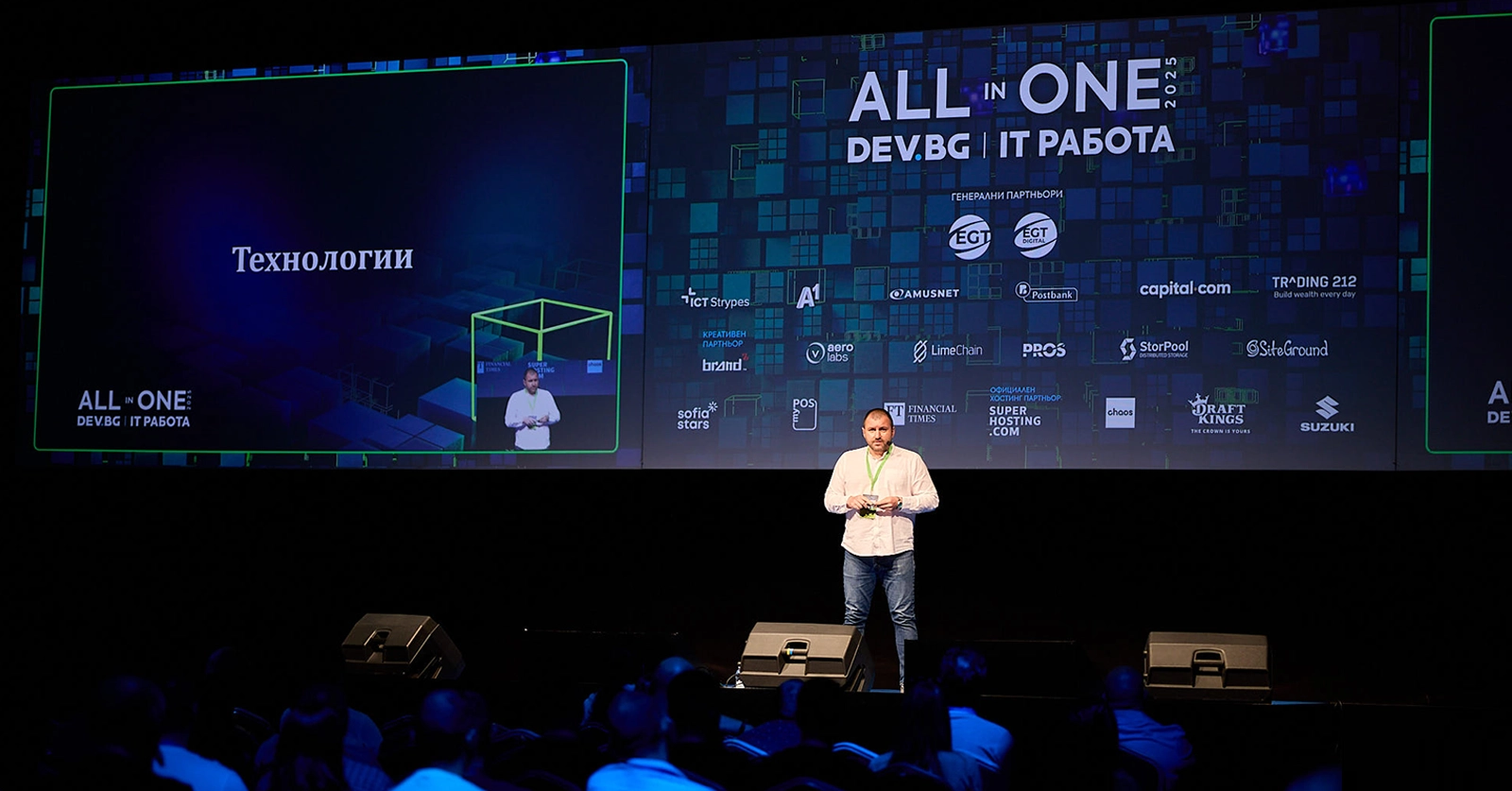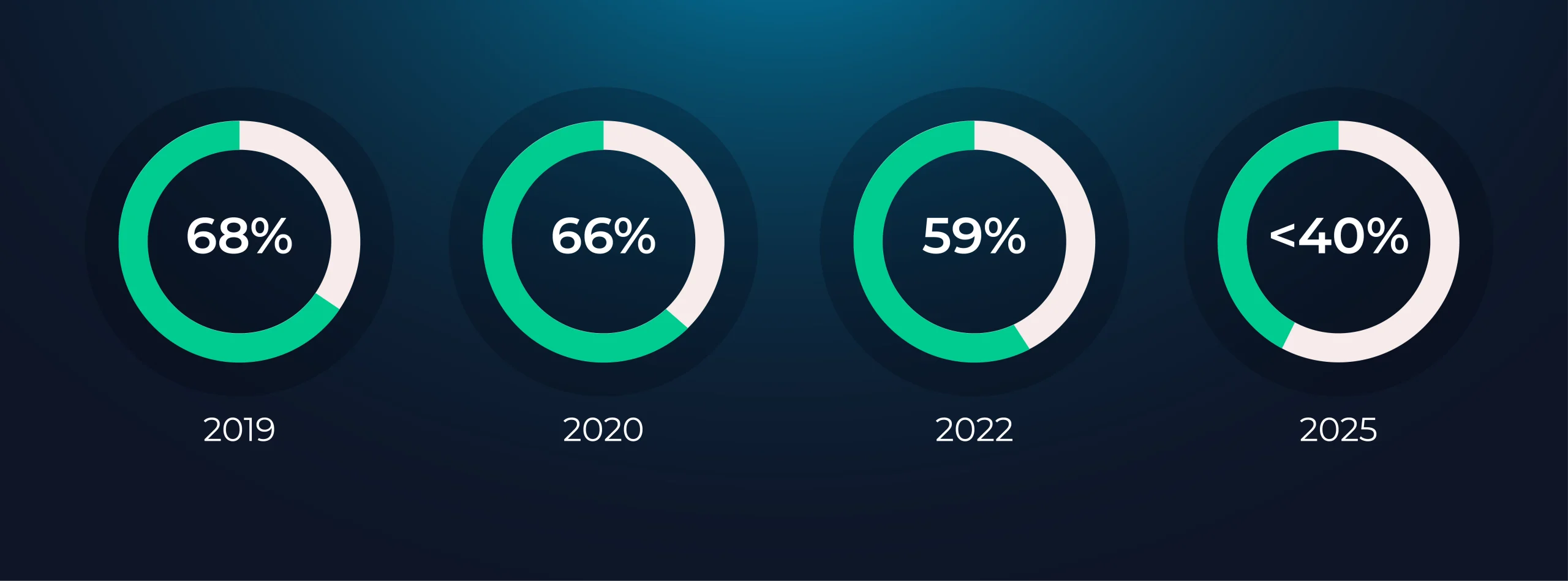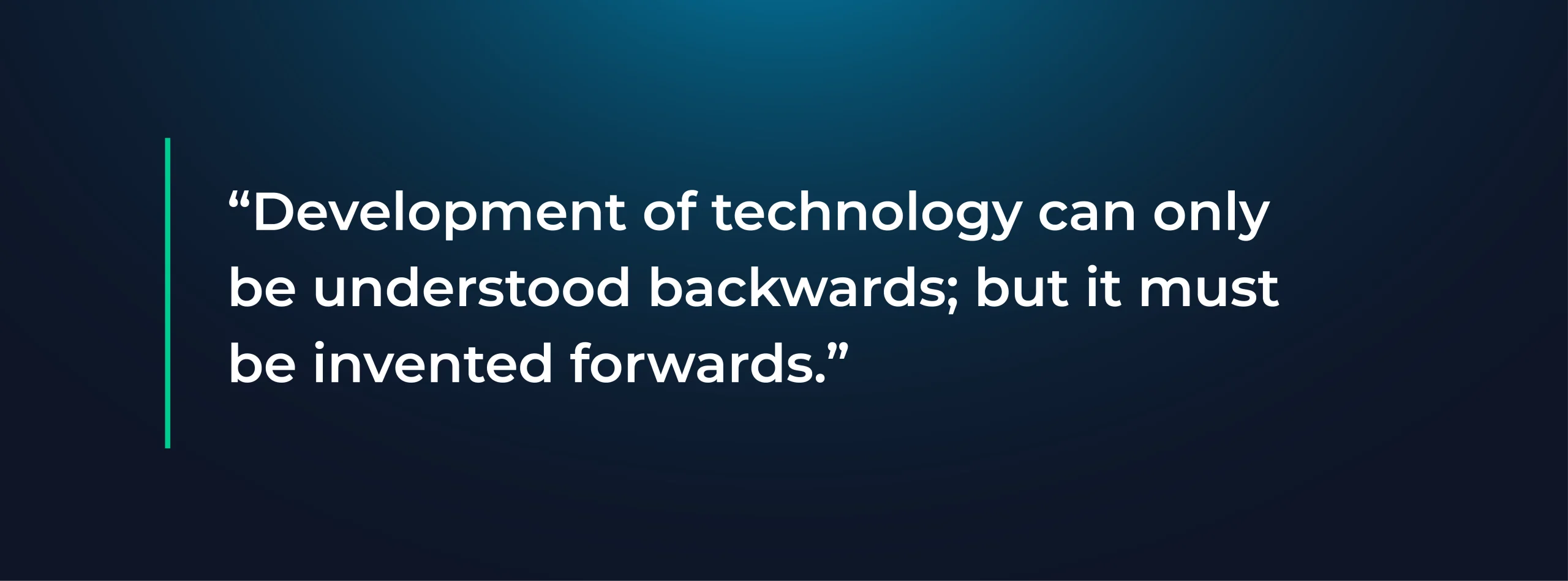A guide to what’s next, minus the hype.

Ever get that feeling that the tech world is moving faster than our brains can catch up? Krasimir Kostadinov, our CTO at Scalefocus, recently dove into this very topic at Dev.bg’s All in One event, and let’s just say… it was a wild ride from relativity to drones, AI, and why some “future tech” might just be smoke and mirrors.
The Relativity of “Now”
Krasi kicked things off with a playful nod to physics. Imagine this: two people side by side, both looking at the Andromeda galaxy. One is standing still, the other is walking. Because of relativity, the “now” at Andromeda is slightly different for each of them. For the moving person, Andromeda’s “present” is a day ahead; for the one standing still, a day behind. Mind-bending, right?
This isn’t just geeky fun. It’s a reminder that the future isn’t some universal constant – it’s relative, personal, and shaped by frame of reference. And it’s not just some hypothetical mental gymnastics – our GPS satellites’ clocks are set to run a bit faster, so that from down here on Earth they seem to run in sync with local time. If that weren’t the case your location in Google Maps would drift by dozens of meters every day.
Physics is sneaky like that.
Predicting the Future… Wisely
When it comes to predicting technology trends, Krasi prefers a grounded approach inspired by Ray Kurzweil: don’t pretend to know the future. Instead, identify the trends, the building blocks, the raw ingredients that will form the base of what’s coming.
He used farming as an analogy. Back in the 1800s in the U.S., one farmer could feed about four people. By the 2000s, that number skyrocketed to around 120. Similarly, software engineers today support hundreds of people with the tools they build. Industries mature, and growth stabilizes – but that doesn’t mean they disappear. The IT industry isn’t going anywhere, even if the days of explosive growth are behind us. Or, as Krasi put it: “The Stone Age didn’t end because we ran out of stones.”
When Tech Hype Meets Reality
Not all shiny gadgets are destined for greatness. Take Microsoft’s keyboards, for example. Krasi noted how his old keyboard from 3 years ago had a dedicated Cortana button. His new one? A Copilot button. And it’s not just keyboards – Microsoft is sprinkling Copilot everywhere across Azure, Windows and Office – from email to spreadsheets to slides. If there’s a Microsoft product, chances are there’s a Copilot trying to squeeze itself in from the ribbon somewhere.
And here’s the funny anecdote he shared: imagine you’re a baker, and your grandma gives you 1,000 jars of cherry jam. You have no idea how to sell them, so you start putting jam on everything – cakes, muffins, pies. That’s exactly what Microsoft is doing with Copilot. It’s not magic – it’s experimenting, figuring out how to sell AI.
Some technologies fail not because they’re bad, but because physics, economics, or human habits aren’t ready. In novelties, being early is often the same as being wrong. Quantum computing, for example, is decades away from widespread use – narrow in application, extremely expensive, and mostly accessible to governments and huge tech giants. Autonomous drones, on the other hand, are evolving fast thanks to availability of video footage, demand and investment (trickling down from mounting defense investments).
IT Demographics: A Looming Challenge
Another hot topic Krasi addressed is IT workforce demographics. The industry is aging, due to the dwindling number of junior specialists entering the field and the fact that most specialists that were let go in recent years had, for the most part, less years in the industry.
Here’s the trend for U10Y (people with under 10 years’ experience):

It’s important to note that the trend started before the wide adoption of AI in software development and thus is not driven by it. Even the release of ChatGPT in late 2022 didn’t significantly accelerate it. Instead, we’re seeing a steady decline of about 19% every three years.
If we don’t hire young specialists now, we’ll soon face a shortage of mid-level engineers, and in just a few years, a lack of senior engineers too. Krasi’s advice is clear: hire young specialists today as an investment in tomorrow’s tech leadership.
Global Tendencies and GeopolITics
Technology isn’t just about gadgets and apps – it’s also about power. Krasi noted that the world of tech is now a three-tiered competition:
- Economic
- Military
- And the new kid on the block – Digital
Countries have realized that economic and military muscle alone aren’t enough anymore. The new battleground is digital: who owns the data, who controls the cloud infrastructure that everything runs on, and who sets the rules. Data sovereignty, cloud and AI sovereignty are climbing the priority list fast. The EU, for instance, is pushing for homegrown cloud providers instead of relying solely on U.S. giants.
It’s a clear signal: nations want tighter control over where their data lives, who governs it, and how it’s protected. The result? More fragmentation, more local solutions, and a much stronger link between technology and national strategy. For businesses, that means one thing – if you’re planning global tech investments, you’d better understand the map isn’t just political anymore. It’s digital too.
Your Future, Individually
Krasi closed on a powerful note: the future is personal. You shouldn’t fear it. You’ll meet it armed with the same tools of reason and judgment you have today. As he paraphrased Søren Kierkegaard:

The takeaway? The future is personal – just like general relativity dictates. It’s something you can navigate, influence, and yes, even enjoy (as long as you prepare for it).



